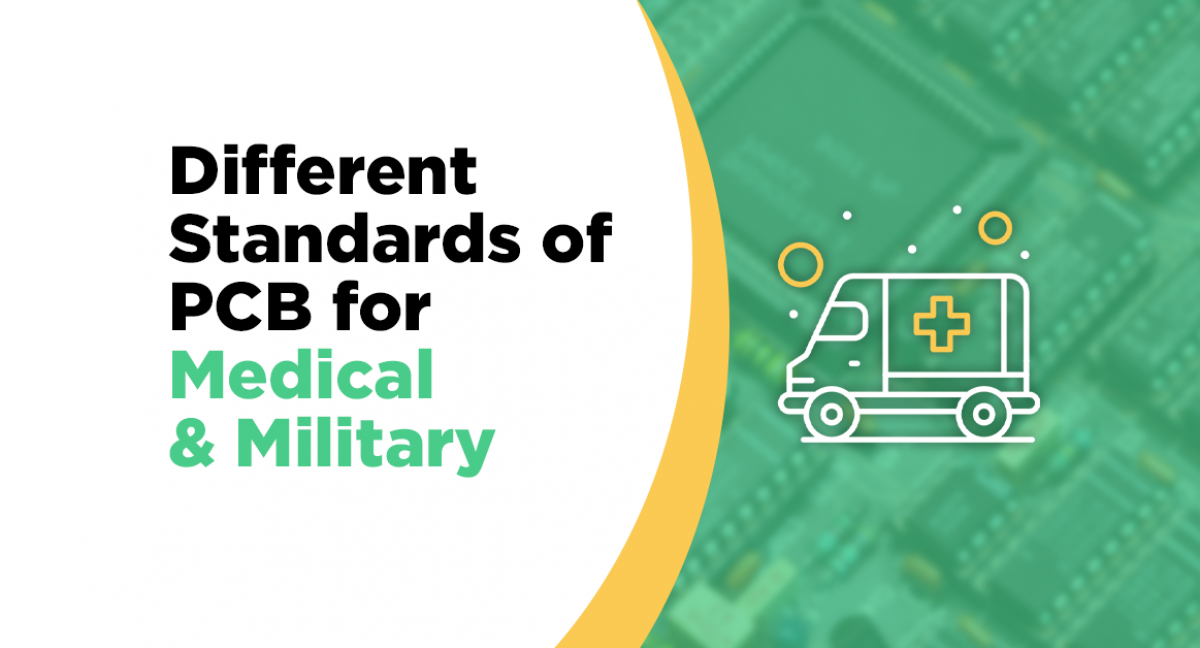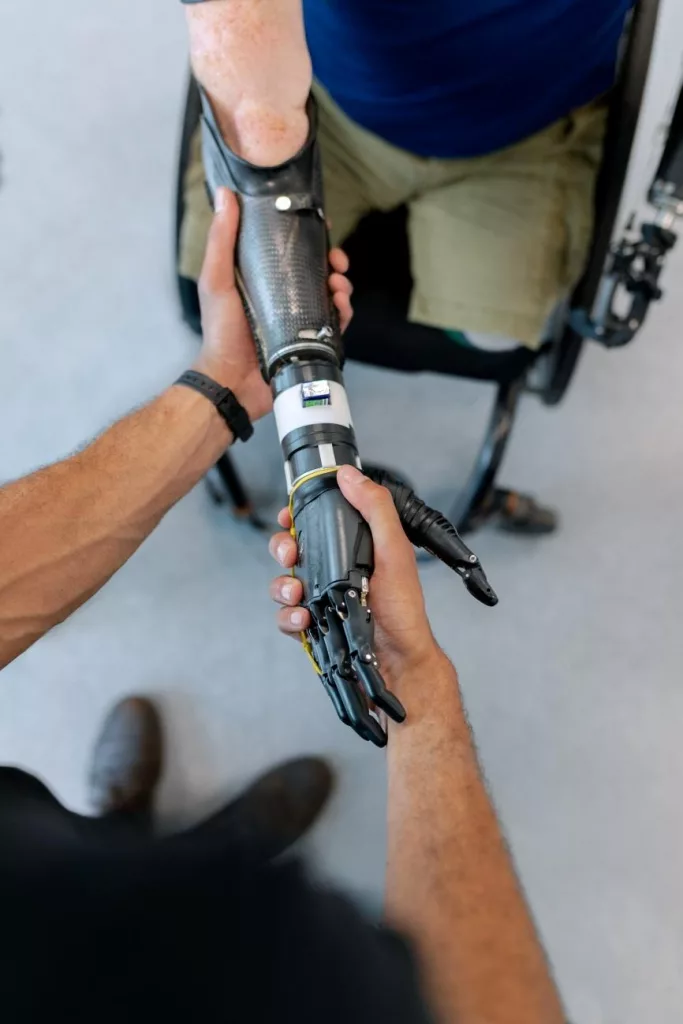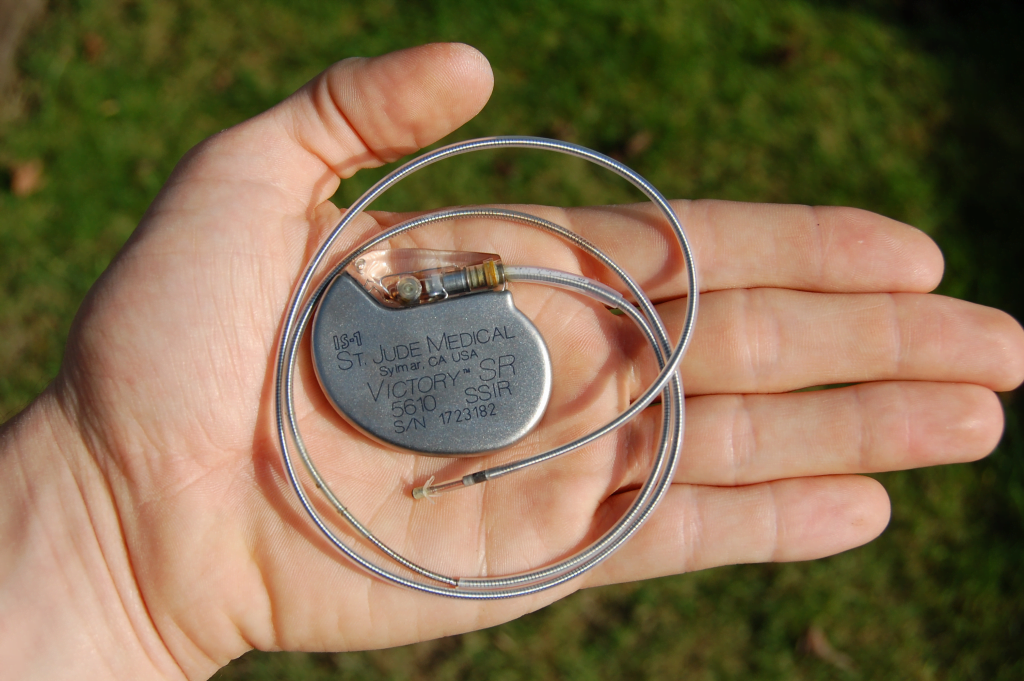It’s very important Standardizing designing and manufacturing because it harmonizes the product nationally and internationally, and safeguards its functioning and reliability.
Today, PCBs have made their way in almost every advanced device. In fact it is safe to say the advancement of any device majorly relies on the PCB that sits at the core of the device. For instance, one of the major breakthroughs is happening in the medical industries. We started with manual diagnosis and operations centuries back but today there are A.I. limbs, artificial pacemakers, life support systems and the list goes on.
Prosthetic arm
Thus, PCBs are no more limited to mere electronic gadgets, they have sprawled to areas which affect us at much higher levels such as medical, military and aerospace. Inconsistency and non-compliance in these fields’ results in catastrophes which aren’t limited to just personal damage rather affects the entire nation and their existence. In this article we’ll try to understand the essential standards that are needed and should be followed while manufacturing these devices as a whole along with some PCB stands for medical and military.
Standards for Medical Devices
Medical devices are designed with precision, demand utmost accuracy in their functioning and have dense circuitry. Medical device also have multiple reduced circuit to handle various failures. They need to be completely contaminant-free to be implanted in the human body and need various certification before it makes into market.
There are various standards which have to be adhered to by the manufacturer not only for the PCB but for the medical device as a whole to ensure safe application. Some of the most important standards and certification which are globally followed for medical device are:
ISO 9001
These are general guidelines (although this is not a requirement) for quality management. It is used world-wide to ensure quality assurance, cost optimization, improving accountability and facilitating growth.
ISO 13485
It is the quality management system standard specifically for devices built for the medical industry. It aligns with some of the ISO 9000 series standards, but is more in-depth in specifying quality and reliability requirements for medical products particularly.
ISO 14971
This standard specifies a process for manufacturers to identify the hazards and risk associated with medical devices, including tests that are done on samples such as blood or tissue that have been taken from the human body using are tests done on samples such as blood or tissue that have been taken from the human body using vitro diagnostics (IVD) medical devices. This helps in estimating and evaluating the associated risks, to control these risks.
IEC
Stands for International Electrotechnical Commission. It’s not-for-profit membership organization, whose work underpins quality infrastructure and international trade in electrical and electronic goods. The IEC brings together more than 170 countries and provides a global, neutral and independent standardization platform.
IEC 60601-1
This standard was developed with contributions from clinicians, engineers and regulators. It’s a standard for Medical Electrical Equipment which contains general requirements for basic safety and essential performance.
IEC 61010-1
Specifies general safety requirements for the following types of electrical equipment and their accessories, wherever they are intended to be used.
a) Electrical test and measurement equipment
b) Electrical industrial process-control equipment c) Electrical laboratory equipment
ISO 27001
It is specifically for ensuring cybersecurity risk minimisation. As medical devices become more sophisticated and internet connected, cybersecurity is an increasing concern. The growing market for smartphone-based health-monitoring apps, as well as connected devices in the diagnostic room and operating theatre, requires proactive information security standards. Add to that the risk of your valuable intellectual property being compromised in a data breach, and it is clear to see why ISO 27001 has become a critical standard for health care and medical device manufacturers.
IPC 6011
Unlike other standards on this list, this standard solely focuses on the general requirements for printed boards and the quality and reliability assurance requirements that must be met. The specification allows the Printed Board user and supplier flexibility to develop optimized procedure for the Manufacture and Procurement of Printed Boards for high reliability.
FDA 21 CFR Part 820 / FDA 21 CFR Part 801
Employ quality system management in accordance with FDA 21 CFR Part 820 and ISO 13485 as part of your design plan and Include any labelling requirements as recommended in FDA 21 CFR Part 801 for your medical electronic device.
Choice of a control manufacturer (CM)
Another factor that can greatly enhance the chances of the product meeting these standards is by choosing the right CM who is capable of high-quality board fabrication and PCB assembly but also be an expert partner that can help you make decisions that reflect your design intent. By collaborating with CM, it’s easy to leverage effective manufacturing processes and equipment for the most efficient development of Medical Electronic Devices.
Need for these standards
Standards complied medical electronic products ensures:
- Quality Control Process: To ensure that the products are built as per industry’s regulations, it is required that all phases of manufacturing have clearly documented quality control processes. In this, ISO 13485 plays an important role.
- Risk Mitigation and Design Control: To avoid manufacturing defects and mitigate risk thereafter, adherence to standards plays a major role. For example, reviewing the bill of materials (BOM) to find and replace components that may become obsolete during the life cycle of the product.
- Safe Miniaturization: Medical electronics needs to be miniaturized, low weighted and have low volume. Standards should be followed in ensuring this to get most optimised results. For instance, pacemakers:
Pacemaker
- Non-Toxicity and Biocompatibility: Since medical devices not only have external use but also internal, ensuring non-toxicity and compatibility with blood is of utmost importance to prevent coagulation of blood. For this ISO 10993 plays an important role by laying standards for various toxicity tests and blood compatibility. For instance, endoscopy devices:
endoscopy
- Audit and Feedbacks: Certification system audits and provides feedback to monitor one’s own performance. Thus analysing the data and processes to annul the shortcomings at the manufacturing stage only.
- Awareness of Regulations: Complying with standards leads to domino effect where one starts to consider adherence to standards at every stage and in every process. This opens the window to include multiple regulation standards such as ISO 27001 which might not have been the initial standard to follow but has evolved due to rising awareness of regulations.
Some of the prevalent medical electronic devices are diagnostic equipment, pacemakers, defibrillators and various artificial implants.
Standards for Military Equipment
Military electronic devices have to withstand extreme conditions caused by both natural conditions like harsh environment, difficult terrain, high altitudes and man-made conditions like battle ground, bombing, etc.
Thus, they are one of the most stringent electronics and needs to be high on:
- Toughness, strength and durability to withstand harsh conditions of the battlefield.
- Rugged and robust to remain undeterred and functional on difficult terrains.
- Longevity to sustain in remote areas since repairs and replacements will not be handy in such environments. So the military electronics shouldn’t end up being a liability than an asset to the military force.
- Compliant to heavy data and quick processing to handle complex interphase and inter-territorial communication and data perception.
- Thermal management should be high and must be heat-resistant with high heat dissipation.
Therefore, an electronic contract manufacturer (ECM) has to qualify on various parameters for PCB in case of military electronics. Various standards that the military electronic PCBs have to adhere to range from MIL, ISO, IPC, ITAR NADCAP and few others.
MIL-STD Standards
The origin of these standards traces back to World War II and has been evolved ever since. Today MIL-STD are available for-
- Interface standards
- Design criteria standards
- Manufacturing process standards
- Standard practices
- Test method standards
For instance, MIL-PRF-31032 lays criteria for PCB layout, design, process and manufacturing. Others are MIL-PRF-50884, MIL-PRF-55110. For testing standards, MIL-STD-883 is for test method standards of microcircuits, MIL-STD-750-2 for semiconductor devices and MIL-STD-202G is for standard electronic and electrical component parts.
ITAR
As the global market for military gadgets rose, the International Traffic and Arms Regulations (ITAR) came into force. These standards are majorly in respect to sensitive information and intellectual property.
Some of the areas covered within it are-
- Design info
- Development info
- Production processes
- Manufacturing steps
- Pictures of assemblies
- Repair processes of specific assemblies
- Testing protocols
- Modifications
NADCAP
NADCAP (National Aerospace and Defence Contractors Accreditation Program) is majorly for aerospace industry but as defence equipment include missiles, fighter jets, choppers and drones so NADCAP compliance also becomes important in case of military devices suited for aerial functions. These include standards with respect to coating, non-destructive testing, heat dissipation, etc.
PCB Standards
Some universal standards too are applicable in military electronics such as:
- IPC-A-610E Class 3 standards which are suited for high performance products.
- AS9100 standards are for quality management.
- The PCB design must withstand and suppress ESD (Electrostatic Discharge). DIN EN 61340-5-1 contains requirements that companies must adhere to for the effective management of electrostatic charge with respect to design, conception, creation, setup and maintenance.
- Must meet FCC (Federal Communications Commission) and EMC (Electromagnetic Compatibility) testing and regulations.
The above mentioned standards are some of the most prevalent and generally looked for standards that any ECM must comply with. However, this list isn’t exhaustive and there are endless more standards that must be adhered to for various specifications, design and processes.
Following Standards, a Necessity or a Choice?
Standards play an important role in making the device stand-out in general.
However, when it comes to something as sensitive as medical electronics or military electronics where the PCBs design and manufacturing have much larger bearing and responsibility in delivering their intended purpose without any fallout, standards become a necessity and not just a choice.
As a manufacturer, one cannot effort to avoid these standards because it’s the matter of life and national security that is at stake and not just an electronic vantage that one is leveraging.













Leave a comment